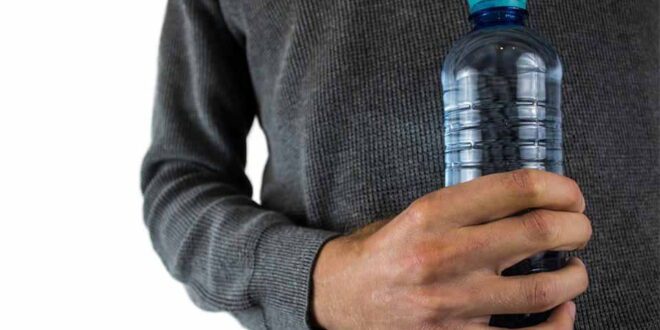Why the right bottle matters
A good water bottle sounds simple. It is not. The wrong one leaks in a bag, warms up fast, or feels heavy after ten minutes. The right one makes drinking water easy without thinking. That saves time, mess, and money spent on last-minute drinks.
Daily life in warm, humid places brings extra heat. Sweat happens fast. Water leaves the body even when standing in shade. A steady bottle nearby keeps energy up and headaches away. It also cuts plastic waste from single-use bottles. One sturdy bottle can replace hundreds of throwaway drinks in a year.
A smart bottle choice does more than hold water. It sets a routine. When the bottle is always clean, easy to open, and sized to match the day, hydration becomes a habit. That habit pays off during school, work, sports, errands—everywhere.
A quick place to start
Choosing a first bottle can feel crowded with options. Stainless steel, Tritan plastic, flip lids, straw lids, twist caps, narrow or wide mouth—it is a lot. A simple way to begin is to scan everyday picks for local weather and needs.
Browsing trusted options for water bottles in malaysia helps narrow down sizes, lids, and materials that fit hot, humid days without overthinking it. From there, focus on what will be used every single day, not once in a while.
Size that fits the day
Bottle size should match the plan, not a guess. If a bag is small or already full, a 350–500 ml bottle makes sense for short trips. It tucks into side pockets and does not weigh much. For long classes, sports, or travel with fewer refill spots, a 700–950 ml bottle works better. It cuts refills and keeps focus on what matters.
A good rule: pick the smallest size that still covers two to three hours without a refill. This keeps the bottle light and reduces the chance it gets left at home. If daily life switches between short and long days, consider two sizes that share the same lid style. That way, opening the bottle always feels the same.
Lids that match the moment
The lid controls speed, leak proofing, and cleaning. Flip lids open fast with one hand, which helps during quick breaks. Straw lids are even faster and can keep teeth safe during bumpy rides. Twist caps seal tighter and tend to leak less in packed bags, though they take a bit longer to open.
When the bottle rides in a backpack with books and a laptop, leak control matters most. Look for a real gasket (a soft ring under the lid) and a firm lock. If the bottle will live on a desk, quick access may be the top need. In that case, a straw or flip lid wins.
Cleaning is part of the choice. Lids with many tiny parts lose points if they stay wet or trap smells. Fewer parts means faster cleaning and fewer surprises.
Materials: what touches the water
The common picks are stainless steel and high-grade BPA-free plastic. Stainless steel is strong and handles bumps. It also works with double-wall insulation, which keeps drinks cold for hours. The trade-off is weight. Even small steel bottles can feel heavy in a backpack.
BPA-free plastic is light and clear, so it is easy to see how much water is left. Modern plastics made for bottles do not leave a taste when cleaned well. They may show scratches sooner than steel, which is a look issue, not a safety one, when handled with care.
Glass gives a clean taste and is easy to sanitize, but it breaks and is heavier. For most students and commuters, steel or quality plastic makes daily life easier.
Cold, clean, and ready
Cold water helps many people drink more. Insulated steel bottles keep water cold longer. If weight is a concern, place a few ice cubes in a plastic bottle and refill through the day. Keep the bottle out of direct sun when possible. Shade and air flow help more than most people expect.
Clean water also needs a clean bottle. Wash with warm water and mild soap at the end of the day. Let it dry open overnight. A bottle brush reaches the base and corners. A straw brush helps with narrow sippers and lid parts. If a smell appears, soak with a mix of warm water and baking soda, then rinse well. Avoid bleach for daily care. It can damage parts and leave a harsh scent.
Design that saves time
Small design touches add up. A carry loop lets a hand stay free for doors and stairs. A base with a soft pad lowers clatter on desks. A narrow bottle fits more bags and cup holders, but a wide mouth makes cleaning easier. Choose the one that solves the bigger problem in the day.
Marks on the side can help with pacing. Some bottles have time lines to show how much to drink by noon, then by late afternoon. If a bottle does not have marks, set simple goals: finish one by mid-morning, one by lunch, one by late afternoon. Reset at dinner if needed.
Make hydration automatic
Habits work when the behavior is easy and tied to a cue. Place the bottle where it is seen first thing in the morning. Fill it before leaving home. Keep it on the desk within reach, not in the bag. Refill at the same times every day, such as after a class or during a break.
Sipping small amounts often beats chugging a lot at once. The body uses it better, and there is less need to rush to a washroom. Snacks with water—fruit, soup, yogurt—also help. During heavy sweat, add a pinch of salt to food and drink water steadily to replace what was lost.
Safety and school rules
Check school or workplace rules for bottle use. Some places ask for clear bottles. Others allow only sealed lids during class. Follow those rules to avoid spills and stress. For younger students, pick a bottle that opens and closes easily with small hands and has parts that do not fall off.
Avoid very hot drinks in plastic bottles that are not rated for heat. Use cups or thermos units made for hot liquids. For steel bottles, check if they are safe for both hot and cold. Many are, but not all lids can handle high heat.
Cost over time
A good bottle is an investment. Cheap bottles often crack, stain, or leak. Replacing them costs more in the end. A strong, light bottle with a lid that seals well can last years with simple care. Replacement gaskets and lid parts stretch that life further.
Think about the hidden costs too. Fewer trips to buy drinks save time and transport money. Better focus in class or at work adds value that does not show on a receipt.
Care that keeps it fresh
Build a simple loop: rinse after each use, wash daily, deep-clean weekly. Do not leave sweet drinks in the bottle overnight. Sugar feeds smells. If a lid holds water after washing, shake it out and air dry. Store bottles with lids off to keep fresh air moving.
For steel bottles, avoid dropping on hard corners. Dents can pinch the inner wall and affect insulation. For plastic bottles, avoid harsh brushes that scratch. Micro scratches can hold odors. Use soft tools and patience.
Putting it all together
Match size to the day. Pick a lid that suits the way the bottle is carried and used. Choose a material that balances weight, taste, and strength. Keep cleaning simple and steady. Place the bottle where it is seen and easy to grab. Refill at the same times, and sip through the day.
This plan sounds simple because it is. Yet it works. A bottle that stays close, opens fast, and cleans up quick turns hydration from a chore into a habit. That habit means fewer lines at vending machines, fewer spills, and fewer headaches from long afternoons. It means showing up ready for class, practice, and friends.
What to remember
Good hydration starts with a bottle that fits real life. The right size, the right lid, and the right material make water easy to reach and pleasant to drink. Clean care keeps every sip fresh. Place the bottle within sight, sip often, and refill on a rhythm. Small choices save time and stress across the week.
Try one upgrade today—size, lid, or cleaning—and use it for a full week. Notice the steady energy, calmer focus, and fewer extra trips. Then keep going. One smart bottle, many better days.
 khamush.com Lifestyle | Motivation | Poems
khamush.com Lifestyle | Motivation | Poems



